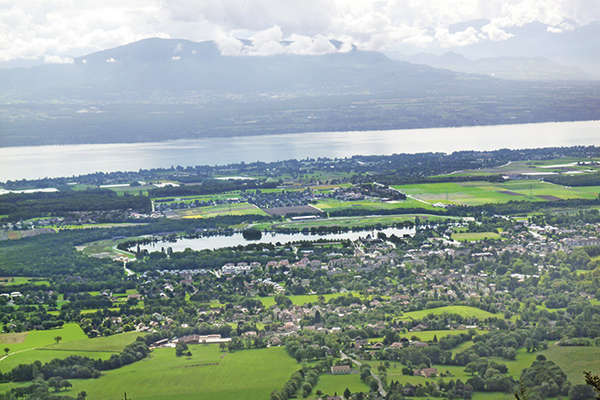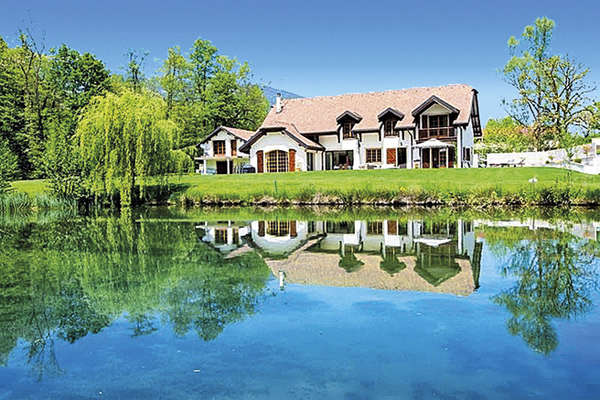Saint-Jean-de-Luz : taking stock
By Laetitia Rossi - 28 April 2010
Located on the southern Basque coast near the Spanish border, this town which hosted the wedding of the Sun King and the Infanta Marie-Theresa in 1660 offers a coastal strip of 7.5 km, a superb bay and typical architecture, dating back in the historic centre to the 17th century.
Saint-Jean can be reached by Route National 10, the A63 motorway or by train. Its 14,100 residents enjoy a natural environment of remarkable beauty. As evidenced by Sainte-Barbe, a listed site of about 6.25 acres overlooking the ocean, the Ducontenia park, 7.5 acres of open green space within the town, and the bay, a paradise of 600 acres much appreciated by water-sports enthusiasts. The town’s architectural legacy is another attraction : Place Louis XIV, the Church of St. John the Baptist and the harbour are popular among tourists, 90 % French, but also English, Spanish, German and Belgian. The reputation of the seaside resort dates back to the late 19th century. Its economy now relies mainly on the service sector, but also includes industry and agriculture. The town has two activity zones, Laïatz and Jaldaï, though the centre accounts for 62 % of its total commercial turnover.
“The current situation is more accurately described as a slight pick-up than a recovery, which seems a bit premature,” comments Cécile Martiarena of Square Habitat. Opting for caution rather than excessive enthusiasm, this estate-agent refuses to draw hasty conclusions, “particularly as employment in France is still a cause for concern”. The market is certainly sluggish, especially away from the centre. Fans of apartments are very fond of the historic part of town where they pay on average 5,000 €/m2 for a property in satisfactory condition ; more, if it is accompanied by a view of the bay or amenities such as a garage, terrace or elevator. Equally central, the very lively neighbourhood of Les Halles offers local charm. Fargeot and Urdazuri are close by, more affordable and relatively popular. Sainte-Barbe offers the most desirable houses, though their prices, ranging from 1 to 2 million euros, are often prohibitive in today's economic climate. Ready to pay around 400,000 € for the famous “etxea”, the locals head for Ciboure, Ascain, Saint-Pée-sur-Nivelle or Urrugne. In the best scenario, they get 150 m2 in good condition, in grounds of 1,000 m2. Finally, building plots are in steady demand in the 100,000-200,000 € bracket. At these prices, a panoramic view of the Atlantic will not be included. All sectors combined, the average budget of current buyers ranges from 250,000 to 350,000 €. “Saint-Jean’s property market is closely tied to that of Ciboure, which posts slightly lower prices and appealing solutions,” notes Fabrice Carré of Century 21 Donibane. Bordagain can be compared with Sainte-Barbe, Marinela with Urdazuri. Until 2008, buyers were equally shared out between main residences, semi-main and holiday homes. While the number of French seniors willing to make frequent trips between their main homes and their residences in Saint-Jean remained stable in 2009, those seeking holiday homes postponed their plans to purchase, while locals took advantage of lower prices and interest rates to take the plunge. The sector for houses has been hard hit. Before the crisis, villas started at 550,000 € and rose to unjustified levels. Authorities in the surrounding area made land available and some buyers embarked upon construction. For 450,000 €, they could obtain the same living space but new, fitted out to suit their taste and requirements.
Jean-Michel Toustard of the Agence du Parc does not deny the price decline of around 10 to 15 %, partly caused by the departure of the Spanish who have been badly affected by the international situation. “The qualities of Saint-Jean-de-Luz are nonetheless real. Like Guéthary and Bidart, it benefits from a typically Basque coastline and scenery, between the airports of Biarritz, 15 km away, and Saint-Sébastien, about 20 km away. Its flat layout makes walking easy and the use of a car is not essential, whether you want to go to the beach or indulge in window-shopping.” People play golf, enjoy sailing, surfing, thalassotherapy and even shopping on Sundays. From March to November, the cultural calendar is very full. The satisfactory commercialization, despite the crisis, of the “Iratzia” tourist residence, a development signed Robert Alday with pool, tennis courts and a terrain for Basque “pelota”, just 300 metres from the Erromardie beach and to be delivered next summer, is a strong indication of interest. Its eligibility for Scellier tax benefits also explains its popularity. Investors from all over France are looking for immediate tax advantages and ultimately, the pleasure of retirement in the sun.


